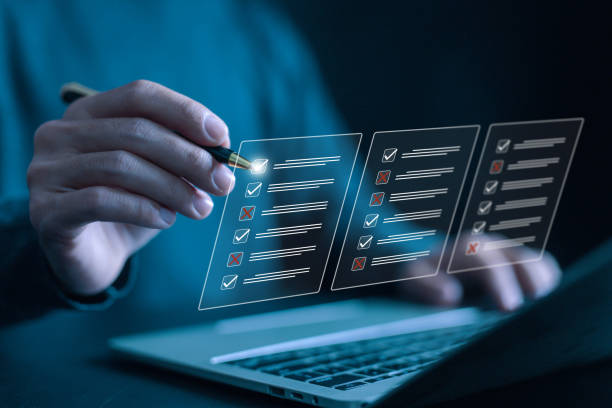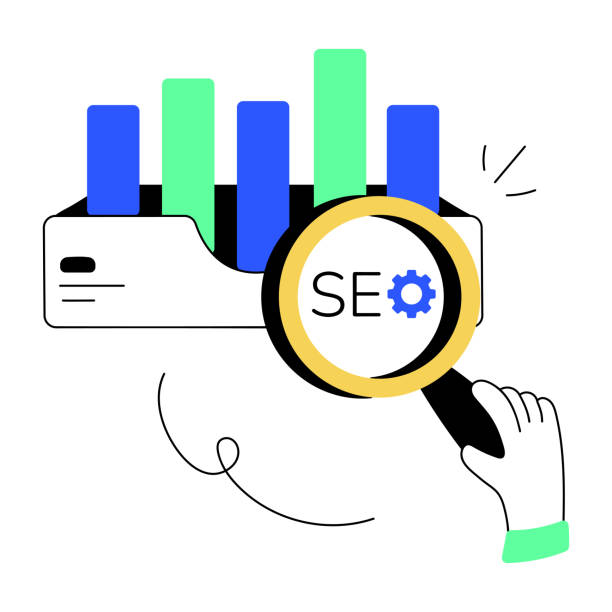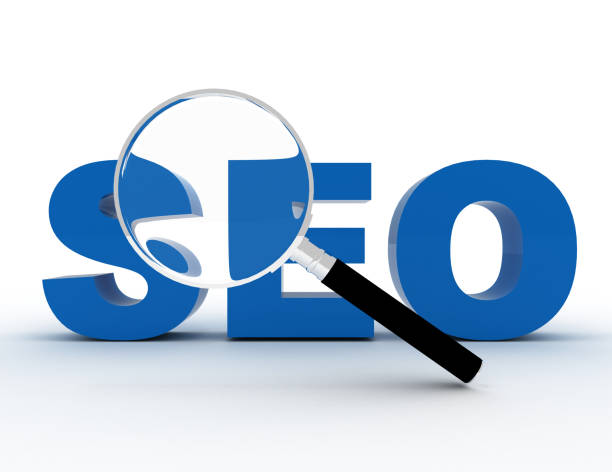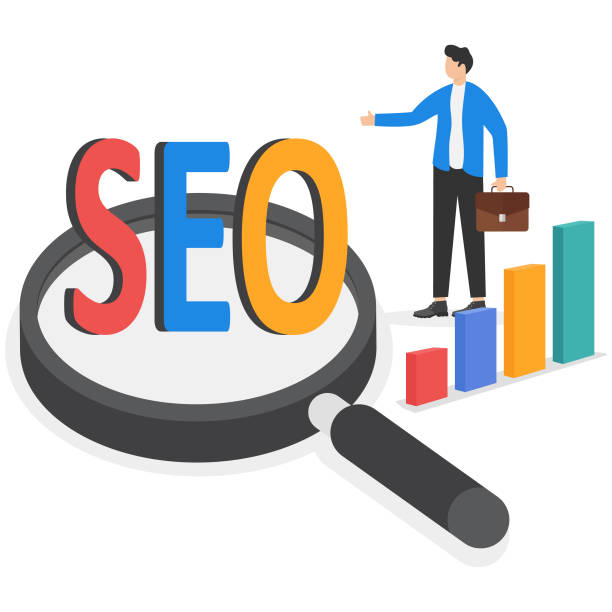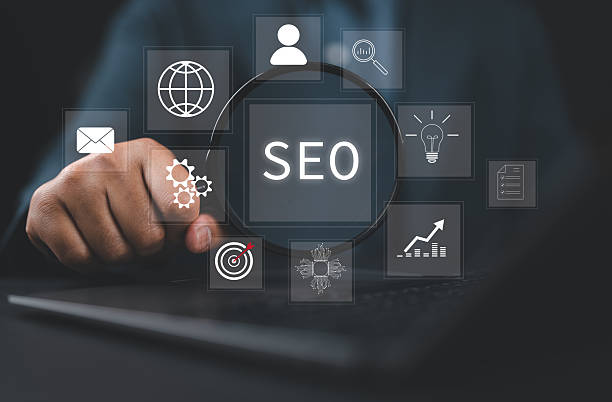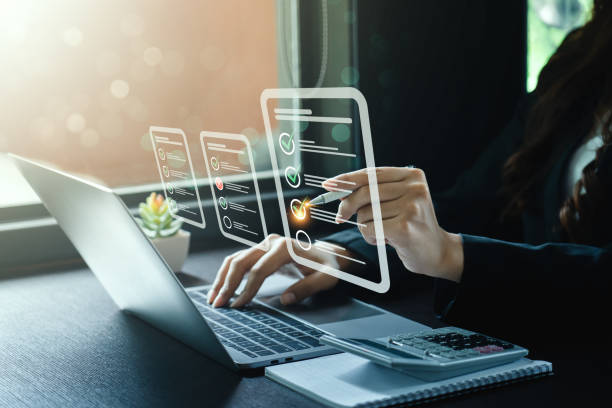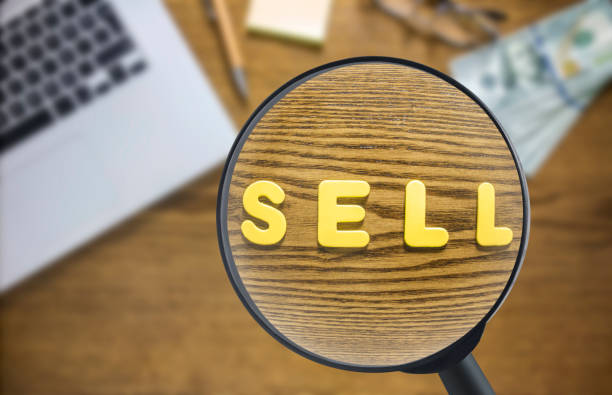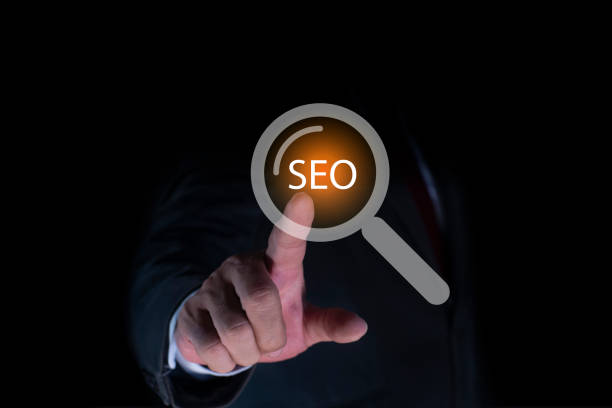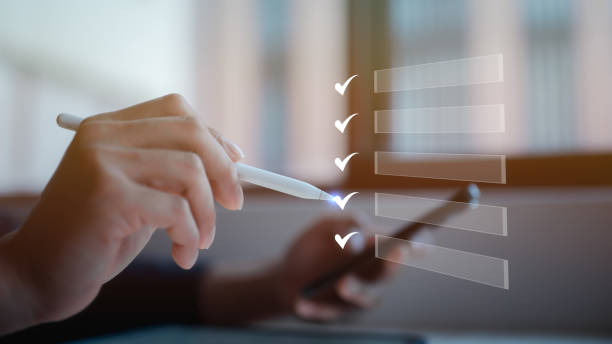What is On-Page SEO and Why Does it Matter?
On-Page SEO refers to a set of actions that are performed within your website to improve your site’s ranking in search engines like Google.
These actions include optimizing content, HTML tags, URL structure, and site speed.
The importance of on-page SEO stems from the fact that it helps search engines better understand the content of your site and show it to users who are looking for relevant information.
Ignoring on-page SEO can cause your site to rank lower in search results and receive less organic traffic.
In fact, on-page SEO is the foundation for success in #SEO, and without it, your efforts in the field of Off-Page SEO will not yield the desired results.
The importance of on-page SEO is such that many experts consider it half the battle for success in SEO.
A site with strong on-page SEO has a better chance of being seen by its target audience and can effectively attract organic traffic.
This organic traffic is not only free but is also often of higher quality, because users who reach your site through search are looking for the information or products that you offer.
Did you know that 94% of first impressions of a company are related to its website design?
Rasaweb helps you create the best first impression by providing professional corporate website design services.
✅ Create a professional and trustworthy image of your brand
✅ Attract potential customers more easily and improve online presence
⚡ Get a free consultation on corporate website design
Keyword Research, the Cornerstone of On-Page SEO
Keyword research is the process of identifying the words and phrases that users type into search engines to find information related to your business.
These keywords should be strategically used in your site’s content so that search engines understand what topics your site covers.
There are various tools for keyword research, including Ahrefs, SEMrush, and Google Keyword Planner.
When choosing keywords, you should consider search volume, competition, and their relevance to your business.
Also, using long-tail keywords can help you attract more targeted traffic.
For example, instead of using the keyword “shoes,” you can use the phrase “buy men’s athletic shoes.”
This phrase is more specific, and users who search for it are more likely to be looking to buy.
Click here to preview your posts with PRO themes ››
After selecting keywords, you need to place them in strategic locations on your site.
These locations include the Title Tag, Meta Description, Headings, Body Text, and Alt Text of images.
Correct use of keywords in these locations helps search engines better understand the content of your site and rank it higher in search results.
Keep in mind that excessive use of keywords (Keyword Stuffing) can harm your site’s ranking, so you should use them naturally and reasonably.
Optimizing Content for On-Page SEO and Users
Content is king! This phrase is very famous in the world of SEO, and the reason is that high-quality and relevant content is one of the most important factors in ranking your site in search engines.
Your content should be valuable to users and answer their questions.
It should also be written in a way that is understandable to search engines as well.
To optimize content for on-page SEO, you need to use keywords strategically, observe the structure of the text well, and use relevant images and videos.
You should also make sure that your content is unique and original and avoid copying content from others.
Producing SEO-optimized content is a crucial pillar of SEO.
To improve content readability, use short and simple sentences, use subheadings to divide the text, and use lists and bullets to present information in an organized manner.
You should also make sure that your content is grammatically and orthographically correct.
High-quality content not only helps improve your site’s ranking in search engines but also increases user engagement with your site.
Users who find useful and engaging content on your site are likely to spend more time on your site, view more pages, and become loyal customers.
Get a good ranking with appropriate on-page SEO.
| Element | Description |
|---|---|
| Title Tag | The title of the page that is displayed in search results. Must include the main keyword and be attractive. |
| Meta Description | A brief description of the page’s content that appears below the page title in search results. Should encourage the user to click. |
| Headings | Headings used to divide the text. Should include relevant keywords. |
| Body Text | The main text of the page, which should provide valuable information to users. Should include keywords naturally. |
| Alt Text | A description provided for images. Should include relevant keywords and help search engines understand the image. |
Optimizing Heading Tags for On-Page SEO
Heading tags (H1, H2, H3, …) are used to structure your content and help search engines understand the hierarchy of information on your page.
The H1 tag is the most important heading tag and should indicate the main title of your page.
Each page should have only one H1 tag, and this tag should include the main keyword of the page.
H2 tags are used for subheadings, and H3 tags and other heading tags are used for sub-items.
Correct use of heading tags not only helps improve your site’s on-page SEO, but also improves content readability.
Users can quickly understand what topics the page is about by looking at the page headings.
When using heading tags, there are a few things to keep in mind.
First, you should use the tags in hierarchical order.
This means that after the H1 tag, you should use the H2 tag, and after the H2 tag, you should use the H3 tag, and so on.
Second, you should use relevant keywords in your heading tags.
Third, you should make sure that your heading tags are clear and concise and clearly explain the topic of each section of the page.
By following these tips, you can use heading tags as a powerful tool to improve your site’s on-page SEO and user experience.
Optimizing heading tags for SEO is one of the requirements of on-page SEO.
Are you unhappy with the low sales of your online store?
Rasaweb is your solution to having a professional and high-selling online store.
✅ Significant increase in sales and revenue
✅ Easy and enjoyable shopping experience for customers
⚡ Get a free consultation from Rasaweb right now!
Optimizing URLs for On-Page SEO
Web addresses (URLs) play an important role in on-page SEO.
An optimized URL should be short, readable, and include relevant keywords.
Long and complex URLs are not only unpleasant for users, but also more difficult for search engines to understand.
For example, instead of using a URL like “example.com/page?id=123&category=456”, it is better to use a URL like “example.com/seo-dakhli”.
This URL is shorter, more readable, and includes the keyword “on-page SEO“.
When optimizing URLs, there are a few things to keep in mind.
First, you should use lowercase letters.
Second, you should use hyphens (-) instead of underscores (_) to separate words.
Third, you should avoid unnecessary words like “a”, “an”, and “the”.
Fourth, you should try to keep URLs as short as possible.
By following these tips, you can create optimized URLs that help improve your site’s on-page SEO and user experience.
Optimizing links has a direct impact on SEO.
Optimizing Images for On-Page SEO
Images play an important role in user engagement and attractiveness of your site.
But images can also help improve your site’s on-page SEO.
To optimize images for SEO, you should use appropriate Alt Text, optimize image filenames, and reduce image file sizes.
Alt Text is text that is displayed instead of an image if the image fails to load.
Alt Text should be descriptive and include relevant keywords.
Image filenames should also be descriptive and include relevant keywords.
For example, instead of using a filename like “IMG_1234.jpg”, it is better to use a filename like “rahnamay-jame-seo-dakhli.jpg”.
Image file sizes should also be as small as possible to increase page load speed.
You can use image compression tools to reduce image file sizes without losing quality.
By optimizing images, you can help improve your site’s on-page SEO and user experience.
High-quality images are one of the most important factors in on-page SEO.
Optimizing Site Speed, a Critical Factor in On-Page SEO
Site speed is one of the most important factors in on-page SEO.
Users who encounter a site that takes a long time to load are likely to leave the site and look for the information they need on other sites.
Google also attaches great importance to site speed, and sites with high loading speeds rank better in search results.
To increase site speed, you can use various methods, including optimizing images, using a CDN, enabling browser caching, and reducing the size of HTML, CSS, and JavaScript code.
You should also use high-quality hosting that has high speed and stability.
There are various tools for testing site speed, including Google PageSpeed Insights and GTmetrix.
By using these tools, you can identify the weaknesses of your site and take action to fix them.
Improving site speed not only helps improve on-page SEO but also increases user satisfaction and conversion rates.
| Factor | Description |
|---|---|
| Image Optimization | Reduce the size of images without losing quality |
| Using a CDN | Using a Content Delivery Network to load content faster |
| Enabling Browser Caching | Storing site content in users’ browsers |
| Code Size Reduction | Reducing the size of HTML, CSS, and JavaScript code |
| Using Quality Hosting | Choosing a hosting with high speed and stability |
Internal Linking, A Way to Improve Site Structure
Internal linking refers to the process of creating links between different pages of your site.
Internal linking helps search engines better understand your site structure and helps users easily navigate your site.
Internal linking can also help improve the ranking of important pages on your site in search engines.
When a page links to another page, some of the credibility of the linking page is transferred to the receiving page.
Therefore, by linking to important pages on your site from pages with high credibility, you can improve the ranking of these pages.
When internal linking, there are a few things to keep in mind.
First, you should use descriptive Anchor Text that includes relevant keywords.
Second, you should link to pages that are related to the topic of the current page.
Third, you should avoid linking to low-value pages.
By following these tips, you can use internal linking as a powerful tool to improve your site’s on-page SEO and user experience.
Are you worried that your company’s old website will scare away new customers? Rasaweb solves this problem by designing a modern and efficient corporate website.
✅ Increases your brand credibility.
✅ Helps attract targeted customers.
⚡ Contact Rasaweb for a free consultation!
Mobile Optimization, a Necessity for On-Page SEO
Today, more than half of web traffic comes from mobile devices.
Therefore, Mobile Optimization is a necessity for on-page SEO.
Since 2019, Google has been using the mobile version of your site for ranking (Mobile-First Indexing).
Therefore, if your site is not optimized for mobile, its ranking in search results will decrease.
To optimize your site for mobile, you should use Responsive Design, increase site loading speed, and improve user experience.
Responsive design means that your site automatically adapts to the screen size of different devices (mobile, tablet, desktop).
You should also make sure that your site is easy to use on mobile devices and that users can easily access the information they need.
By optimizing your site for mobile, you can help improve your on-page SEO, user experience, and conversion rate.
Continuous Analysis and Improvement of On-Page SEO
On-page SEO is an ongoing process and requires continuous analysis and improvement.
You should regularly review your site’s performance in search engines and identify its strengths and weaknesses.
You can use various tools to analyze on-page SEO, including Google Analytics, Google Search Console, and SEMrush.
Using these tools, you can track your site’s organic traffic, identify the keywords that bring the most traffic to your site, and fix technical problems on your site.
You should also pay attention to changes in search engine algorithms and update your on-page SEO strategy based on these changes.
On-page SEO is a dynamic process and requires continuous learning and adaptation.
By continuously analyzing and improving on-page SEO, you can improve your site’s ranking in search engines and attract more organic traffic. On-page SEO is a long-term process.
Frequently Asked Questions
| Question | Answer |
|---|---|
| What is On-Page SEO? | On-page SEO involves optimizing elements that are directly under your control and within your website. Its purpose is to help search engines better understand the content of the page and improve its ranking. |
| Why is On-Page SEO important? | On-page SEO gives search engines clear signals about the content of the page, improves the user experience, and increases the chances of attracting organic traffic. |
| What are the most important factors in On-Page SEO? | Keywords, Title Tag, Meta Description, URL structure, quality content, image optimization, and internal links are among the most important factors. |
| What is the role of the Title Tag in On-Page SEO? | The title tag is one of the most important signals for search engines and users, which specifies the main topic of the page. It should include the main keyword and be attractive. |
| How important is the Meta Description? | The meta description does not directly affect ranking, but by encouraging users to click, it can improve the click-through rate (CTR). |
| How to optimize images for On-Page SEO? | By using a descriptive filename, appropriate Alt Text containing keywords, compression to reduce size, and correct dimensions. |
| What effect do Internal Links have on SEO? | Internal links help search engines discover and index site pages, distribute authority (PageRank) throughout the site, and improve user navigation. |
| Is page loading speed one of the factors in On-Page SEO? | Yes, page loading speed is a critical factor in on-page SEO and user experience. Slower pages can lead to higher bounce rates and lower rankings. |
| What are the characteristics of quality content for On-Page SEO? | Quality content should be comprehensive, unique, relevant, reliable, readable, and fully answer the needs and questions of users. |
| How to use keywords in content? | Keywords should be used naturally in the title, subheadings, first paragraph, body of text, and alt text of images. Avoid Keyword Stuffing. |
And other services of Rasa Web advertising agency in the field of advertising
Smart Social Media: Transform the click-through rate with the help of attractive user interface design.
Smart Reporting: A novel service to increase website visits by optimizing key pages.
Smart SEO: A fast and efficient solution for digital branding with a focus on custom programming.
Smart SEO: A creative platform to improve online growth with smart data analysis.
Smart Social Media: Professional optimization to increase sales using Google Ads management.
And more than hundreds of other services in the field of internet advertising, advertising consulting and organizational solutions
Internet Advertising | Advertising Strategy | Reportage Ad
Resources
Search Engine Journal’s On-Page SEO Guide
,Ahrefs On-Page SEO Tutorial
,Moz On-Page Optimization
,Semrush On-Page SEO Guide
? With Rasaweb Digital Marketing Agency Afarin, your business reaches its peak in the online world! We create a powerful presence for you by providing innovative SEO solutions, professional social media management and multilingual website design.
📍 Tehran, Mirdamad Street, next to the Central Bank, South Kazerun Alley, Ramin Alley No. 6

